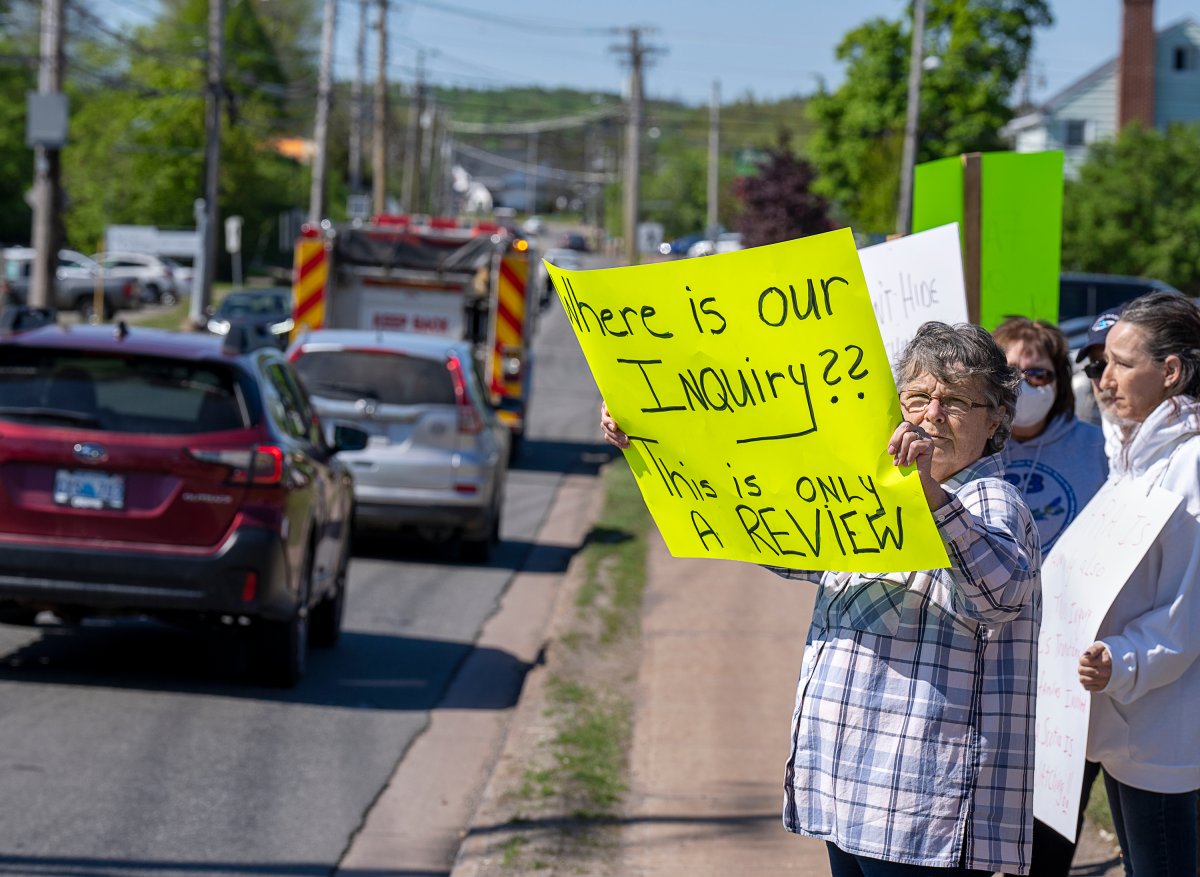The Mountie who led the early response to the Nova Scotia mass shooting testified Monday that his plans to block the killer’s escape were thrown off by a subordinate’s “misunderstanding” and a crush of competing duties.

It was one of the miscues that Staff Sgt. Brian Rehill, a risk manager based at the Operational Communications Centre in Truro, said occurred on April 18-19, 2020, as he faced a “tsunami” of information while a murderous rampage unfolded in the village of Portapique.
The public inquiry heard that just after 10:44 p.m. on April 18, Rehill told Const. Chris Grund to station himself at Hillview Lane, a small road off the highway four kilometres east of the community.
Meanwhile, the killer was escaping in a replica RCMP car through back roads at about 10:45 p.m. after murdering 13 of his 22 victims.
It was unclear from Rehill’s testimony precisely how long Grund would have taken to get to the containment point and whether he would have arrived in time to block the gunman. The officer drove past his assigned position straight to the main road’s intersection with the highway, which was to the west of the dirt-road exit the killer used.
“There probably was a misunderstanding,” Rehill said under questioning from commission counsel Roger Burrill.
“I guess in the busyness of the moment … maybe it didn’t get clarified good enough, and he went past that (location) I believe,” he testified. “I have to own that …. I could have followed up and made sure and said ‘Chris, are you sure you are where I want you?”’
The public inquiry made special accommodations for Rehill’s testimony for health reasons. These included an exemption from being cross-examined by lawyers representing families of the victims, and the hearing was closed to the public. Its contents were only approved for release at the end of the day’s hearing.
Rehill, who has been off work for 18 months, was direct and matter-of-fact in answering questions from Burrill for about four hours before quickly fielding questions submitted by other lawyers.
He completed his testimony with a statement offering condolences to the victims’ families.
“It must be so terribly hard for all of them. It’s a very sad circumstance (and) very tragic,” he said. “But I want people to bear in mind … that we’re human beings. We put on a uniform when we go to work. We put our lives at risk all the time.”
The senior officer said he still suffers from nightmares, poor sleep and constant reminders of what happened in April 2020.
“Everybody that night and the following day had their heart and soul into this,” he said. “They were doing their best. (But) when you dissect it, we could have done better. We’re not denying that.
There’s ways we could improve …. We’re people, too. Everybody’s traumatized.”
In morning testimony, Burrill asked Rehill if there was a way he could have checked on Grund and sent him to his originally assigned position.
Rehill replied he didn’t think he would have viewed Grund’s position with concern, as the maps he was looking at led him to believe there wasn’t an alternative way out of Portapique. He also noted that if the officer had been at the appointed spot, there was a chance he could have been “executed” by the gunman.
Burrill played a brief radio transmission from Const. Vicki Colford at 10:48 p.m. on April 18 saying there was “a kind of a road” the killer could have taken to escape other than the road at which she was stationed. Rehill told the commission he didn’t recall hearing this information, as he was busy with other duties.
He commented that his decision-making in general was affected by the huge flow of information. “It was a lot for me,” he said. “It was frustrating.”
However, lawyers for victims’ families have noted that there were also flaws in the RCMP’s ability to use its own resources and technology.
For example, while Rehill said he couldn’t see small roads on his maps, the inquiry has already received evidence from a supervisor at the Operational Communications Centre that she couldn’t access high-quality maps on the night of the attack due to an inability to find the proper passwords.
A study released last week said the aerial-based maps _ known as Pictometry _ would have given Rehill a clearer view of the killer’s escape route alongside a blueberry field.
Burrill also asked Rehill about why in the middle of the response he was dealing with provincial Child and Family Services, who were calling about four children whose parents were killed in Portapique.
The lawyer suggested that task could have been delegated.
Rehill agreed: “It’s like another task that someone else could be doing.”
He said he understood he was supposed to step back when Staff Sgt. Jeff West took over at 1:23 a.m. on April 19, but he kept providing direction anyway. Burrill pointed out that Rehill remained involved in the operation until 3 a.m.
Rehill said he believes that improved models for the early management of active shootings should be developed, with more risk managers dividing up the work.
“We could have a situation where three or four risk managers come in,” each with a different task, he said.
This report by The Canadian Press was first published May 30, 2022.



Comments